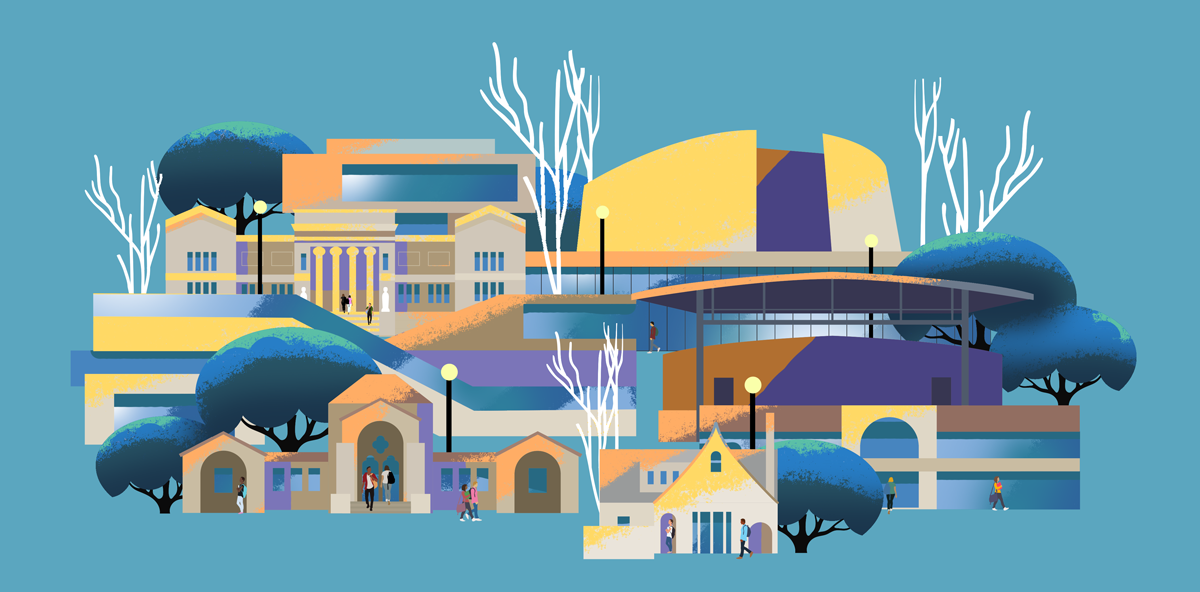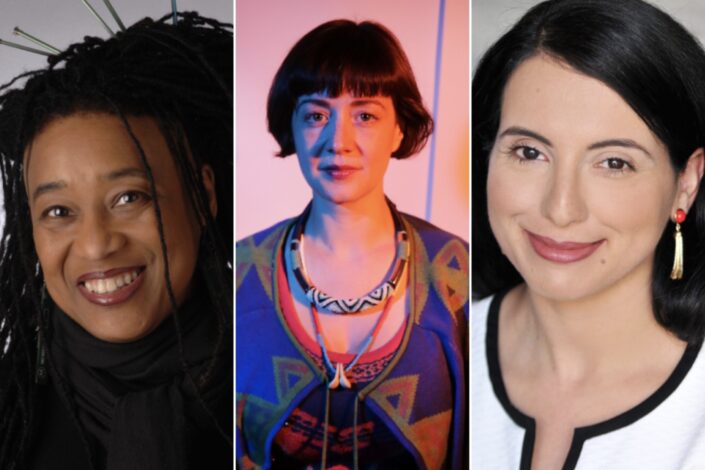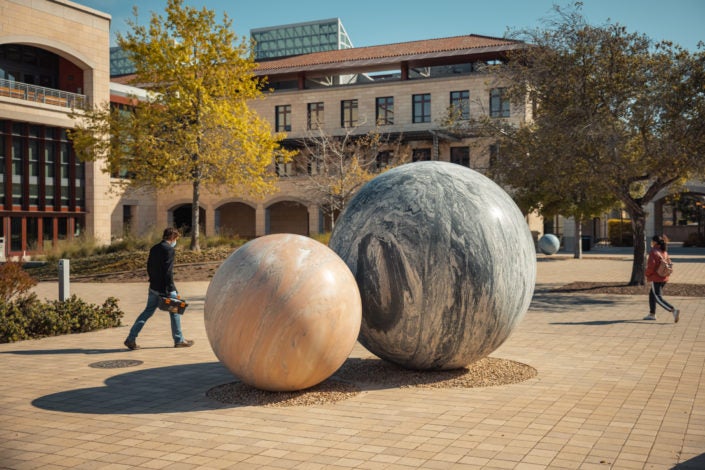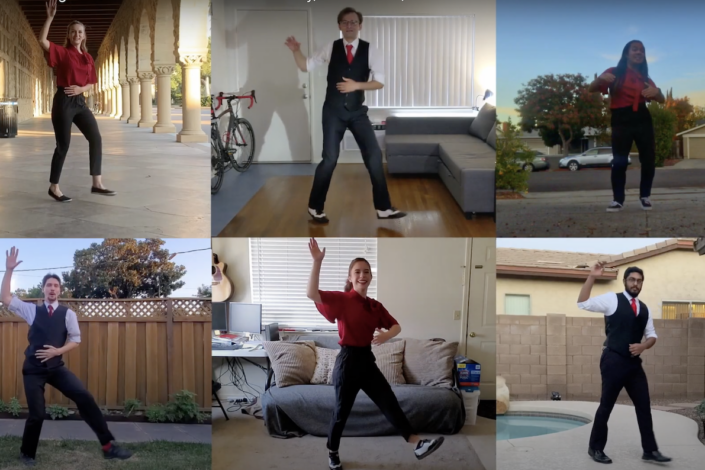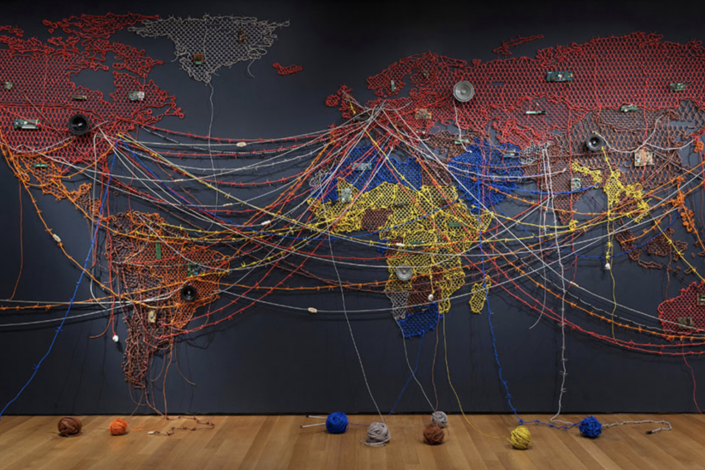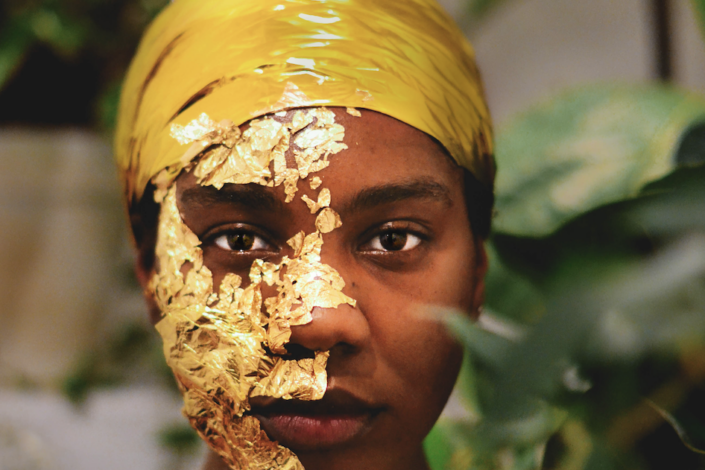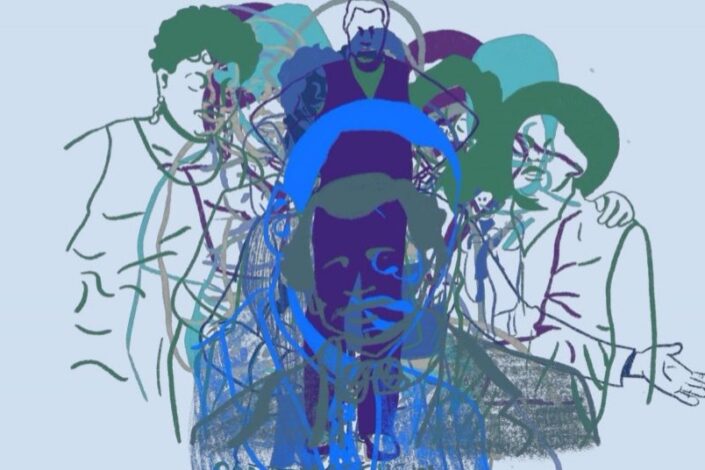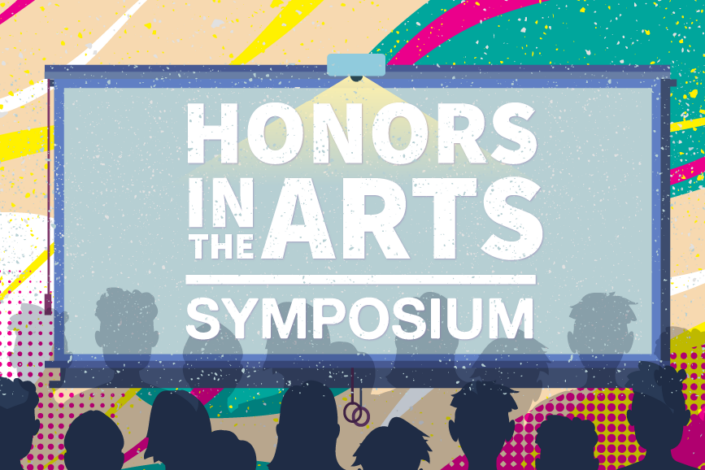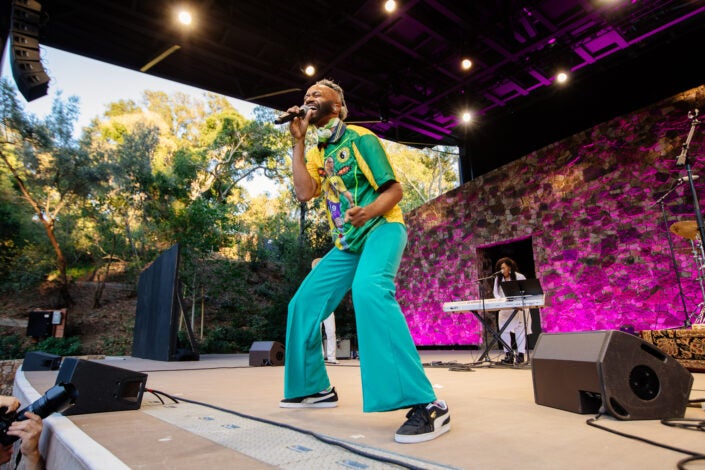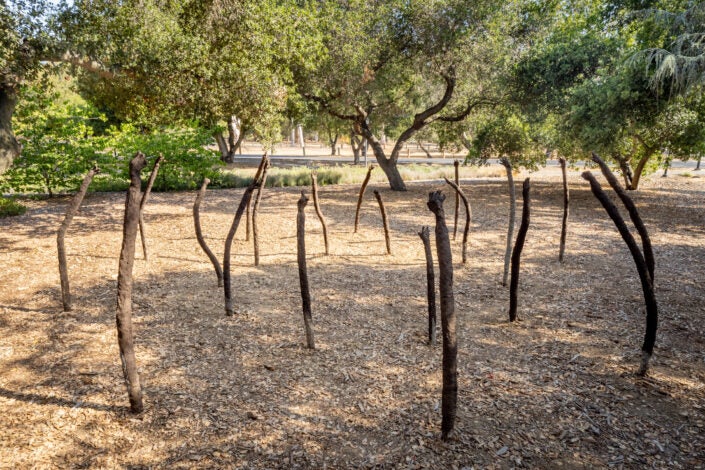STANFORD ARTS |2020-2021
2020-21 was another unusual and extraordinary year for the arts on campus and around the globe. As COVID-19 kept arts facilities closed through the fall and winter, activities in the digital sphere expanded and improved through tenacity and invention. The creative spirit that thrives on the physical campus held the community together in the virtual world of the screen. Stanford faculty, staff, and students continued to research, practice, and present the arts despite the distance and uncertainty challenges. In the spring, we began the gradual and gratifying process of reopening the campus and returning to the museums, performance spaces, and the classroom. Once again, the arts proved to be essential to the Stanford community and beyond.
Here is a glimpse of the remarkable accomplishments and experiences from 2020-21.

Virtual Visiting Artists
During the fall quarter, in the face of extended restrictions of on-campus activities due to the pandemic, the Office of the Vice President for the Arts announced an expedited round of grants available to Stanford staff and faculty in any academic department or program to support three virtual visiting artists for the winter and spring quarters in 2021. The three artists for 2020-21 were composer, performer and media artist Pamela Z, artist and technologist Amelia Winger-Bearskin, and Arab-American playwright Betty Shamieh. The three grants are made possible by the Stanford Visiting Artist Fund in Honor of Roberta Bowman Denning (VAF).
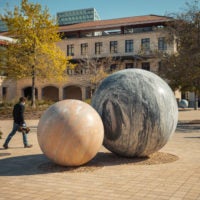
Pars pro Toto
In February 2021, Stanford announced that the Public Art Committee was set to expand contemporary art offerings across campus, beginning with the commission of the site-specific installation of Pars pro Toto by international artist Alicja Kwade. Twelve dazzling stone spheres, ranging in size from a diminutive 16 inches to a colossal 98 inches, were installed in the Science and Engineering Quad in April.
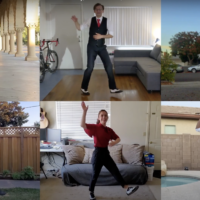
Winter Performing Arts Festival
At the close of the winter quarter, over 20 student art groups and independent student artists gathered online to teach, learn, and celebrate dance, music, poetry, and more with performances and workshops in the annual Winter Performing Arts Festival. All Stanford students, faculty, staff, and affiliates were welcome to participate in live viewing of pre-recorded video performances, including one by Stanford Swingtime.
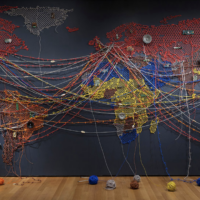
When Home Won't Let You Stay
Installed during the campus closure with no certainty that it would be viewed by anybody before the end of the loan, the expansive traveling exhibition When Home Won’t Let You Stay: Migration through Contemporary Art was finally able to open for several weeks in the spring. The exhibition that spanned both floors of the Cantor, considered how contemporary artists responded to the migration and displacement of people worldwide. Through artworks made since 2000 by artists born in more than a dozen countries, it offered diverse artistic responses to migration, ranging from personal accounts to poetic meditations.
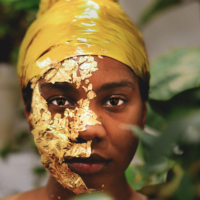
Annual Photography Contest
In June 2021, Stanford Global Studies unveiled the winners of its tenth annual photo contest. Each year, the competition celebrates the creative talents of student photographers affiliated with SGS’s 14 centers and programs. Winning shots were snapped in six countries from a variety of vantage points, including Jasmine Reid’s Quarantine Birthday Portrait in Gold. Reid, an anthropology PhD candidate affiliated with the Center for African Studies, scooped the grand prize for her stunning self-portrait that perfectly encapsulates the spirit of the past year.
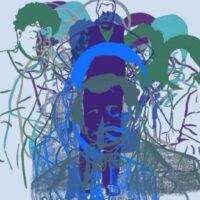
IDA Fellows Showcase
The Institute for Diversity in the Arts (IDA) is a student-facing and serving organization that trains and supports undergraduates in visionary arts leadership through stewarding the power of the arts toward social justice. In support of the belief that the arts are a powerful means for empowering difference, dismantling oppression, and building more sustainable futures, each year the IDA fellows contribute to a rich body of creative work.
Explore the 2021 Fellows’ work in the online showcase.
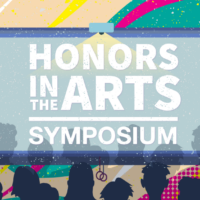
Honors in the Arts Digital Symposium
The Honors in the Arts program allows students from any major to combine their critical and creative interests by completing an interdisciplinary capstone program in the arts during their senior year. Through a yearlong process, students develop projects that go beyond the traditional boundaries of their major – and this year, they worked toward adept and experimental video presentations to share their projects in the digital environment. Students tackled subjects such as identity, self-actualization, representation, memory, human biology, and mental health through words, movement, visual arts, and film..
Watch the students present their capstone projects in the Honors in the Arts Digital Symposium.
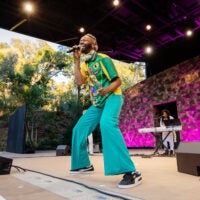
Frost Amphitheater Summer Concerts
In June 2021, Stanford Live welcomed the community back to Frost Amphitheater with a summer series of socially-distanced in-person performances including a rotating selection of jazz and classical concerts presented in partnership with the San Francisco Symphony and SFJAZZ. There were also evenings of mariachi, Bollywood classics, family programming, and comedy. Oakland-based blues-roots-R&B singer Fantastic Negrito kicked off the Thursday night jazz shows, bringing much-missed energy to Frost.
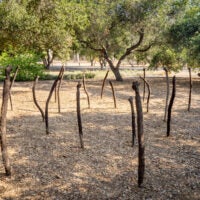
Reaching Towards Warmer Suns
Kiyan Williams’ Reaching Towards Warmer Suns is a public work that was temporarily installed on the grounds of the Anderson Collection among a grove of oak trees when the museum interior was undergoing summer maintenance. The piece was originally installed along the banks of the Powhatan River (James River) in Richmond, Virginia, where some of the first enslaved Black people touched land in the new/ruined world. The work is made of soil from the river and emerged from artist and Stanford alum Williams’ time along the slave docks of Virginia within the context of the pandemic and protests against on-going anti-Black police violence.
My Year Abroad by Chang-rae Lee
Chang-rae Lee, Ward W. and Priscilla B. Woods Professor in the Department of English, published My Year Abroad in February 2021. The book is about a young American life transformed by an unusual Asian adventure, and about the human capacities for pleasure, pain, and connection. Lee is the author of six novels and this most recent received the Award of Merit for the Novel by the American Academy of Arts and Letters in April 2021.
Learn more about My Year Abroad from the publisher.
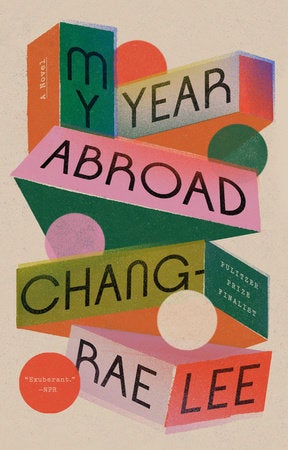
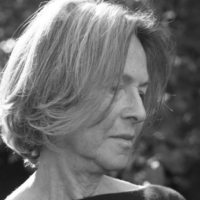
Nobel Prize in Literature
U.S. poet Louise Glück, a visiting professor in Stanford’s Creative Writing Program, was awarded the Nobel Prize in literature in October 2020. The Nobel committee noted her “unmistakable poetic voice that with austere beauty makes individual existence universal.” Glück was the William H. Bonsall Visiting Professor in the Humanities and served as the Mohr Visiting Poet in 2011–12 and then again from 2017 until 2020. She taught the Stegner Poetry Workshop in Stanford’s Creative Writing Program during winter quarter 2021.
Enchantments: Joseph Cornell and American Modernism by Marci Kwon
In her book Enchantments: Joseph Cornell and American Modernism, Marci Kwon, assistant professor of art history, explores Cornell’s attempts to convey enchantment—an ephemeral experience that exceeds rational explanation—in material form. Published in April 2021 by Princeton University Press, this is the first major work to examine Joseph Cornell’s relationship to American modernism.
Learn more about Enchantments from the publisher.
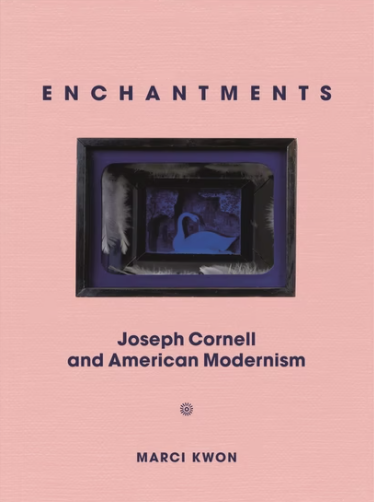

JackTrip
Developed by Stanford music professor Chris Chafe and colleagues, JackTrip enables musicians isolated by the coronavirus pandemic to jam together again with real-time sound streaming over the internet. In this way, JackTrip can often reduce latency – the annoying time delay in data transfer – from one geographical location to another to under a critical threshold of 25 milliseconds. While tiny, that smidgen of time is perceivable by human listeners and is enough to throw a coordinated musical performance out of sync.
Read more about the software program has been optimized for slower, home-based internet connections.
Dancing Women: Choreographing Corporeal Histories of Hindi Cinema by Usha Iyer
In her book Dancing Women: Choreographing Corporeal Histories of Hindi Cinema, Usha Iyer, assistant professor of film and media studies, explores two of South Asia’s most popular cultural forms — cinema and dance — and historicizes and theorizes the material and cultural production of film dance, a staple attraction of popular Hindi cinema. Published in October 2020 by Oxford University Press.
Learn more about Dancing Women from the publisher.
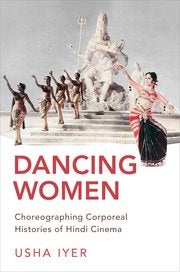
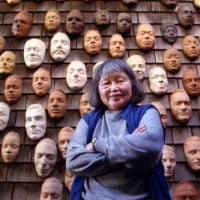
Asian American Art Initiative
The Cantor Arts Center announced in January 2021 the establishment of the Asian American Art Initiative (AAAI), a significant effort to acquire, preserve, display, and research art related to Asian American and Asian diaspora artists and their practices. The launch of the initiative was bolstered by a major acquisition of 233 ceramic masks by Ruth Asawa. Among the first of its kind, Stanford’s newest hub of interdisciplinary scholarship transforms the museum’s collection and expands research opportunities.
Fierce Poise by Alexander Nemerov
In his biography of American artist Helen Frankenthaler published in March 2021, Professor Alexander Nemerov takes the reader on an exhilarating ride through New York’s 1950s art scene and paints a brilliant portrait of a young artist through the moments that shaped her. Nemerov is the Carl and Marilyn Thoma Provostial Professor in the Arts and Humanities.
Learn more about Fierce Poise from the publisher.
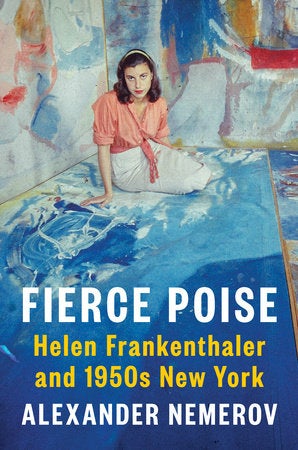

StageCast
Stanford theater director Michael Rau, computer scientist Keith Winstein, and electrical engineer Tsachy Weissman created a new tool to help performers who are located in different spaces, such as those separated due to COVID, come together in online performances. After receiving a grant from the Ethics, Society and Technology Hub’s COVID-19 Rapid Response program, the three along with computer science graduate student Sadjad Fouladi, developed a fall 2020 course that enlisted students to design and develop a platform called StageCast for hosting a live theatrical production over the internet.
Reclaiming John Steinbeck: Writing for the Future of Humanity
English Professor Gavin Jones’ new book Reclaiming John Steinbeck: Writing for the Future of Humanity, examines John Steinbeck’s experimentalism, contending that the author’s portrayals of climate change and wealth inequality make him an important literary voice for today. Jones, the Frederick P. Rehmus Family Professor in the Humanities, contends Steinbeck was one of the most experimental writers of his era.
Read more about Reclaiming John Steinbeck in this Stanford Report story.
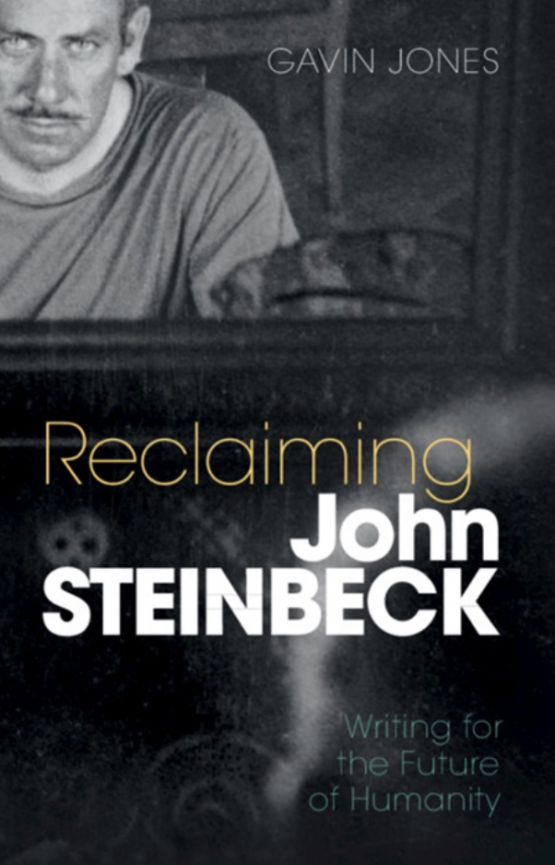
Molly Match illustrated by Robert Coles
Molly Match, a children’s book published in November 2020 featuring a little Black girl that was illustrated by a Stanford staffer Robert Coles, sparked meaningful discussions about inclusion, diversity, and equity on campus. As an African American father, Coles wanted to give his young children books with characters that looked like them, but books with Black protagonists were hard to find when his daughter and two sons were growing up in the 2000s.
Learn more about Molly Match in this Stanford Report story.
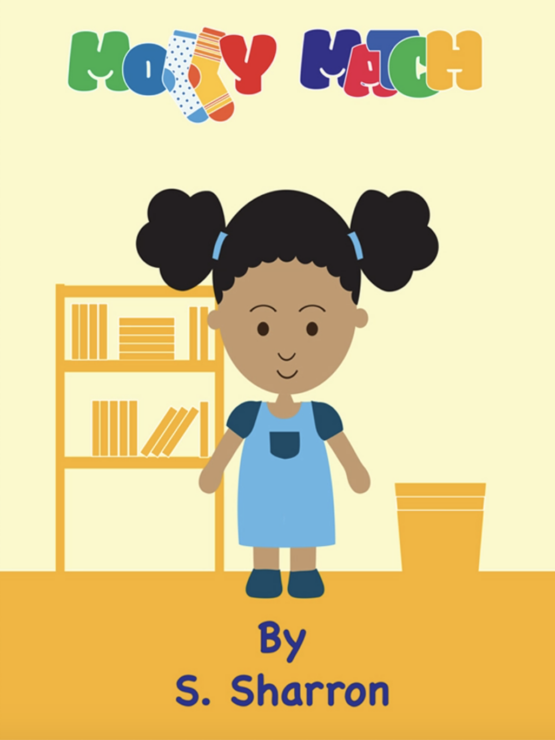
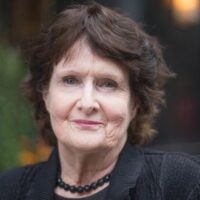
Costa Poetry Award
In January 2021, the late Eavan Boland posthumously won the Costa Poetry Award for her final poetry collection, The Historians, described by the judges as having “some of the finest lines of poetry written this century.” Boland, who was professor of English and humanities and director of the creative writing program, died in April 2020, aged 75. Poetry Ireland announce the establishment of the Eavan Boland Emerging Poet award in April 2021.
Read more about the emerging poetry award.

